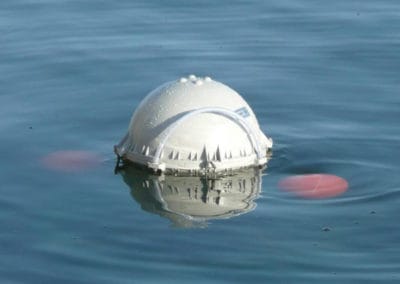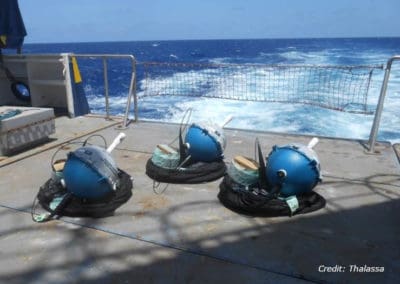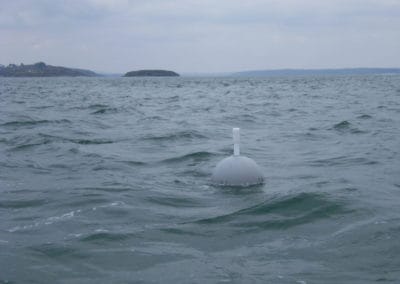nke Instrumentation develops, manufactures and sells drifted buoys in order to monitor the current at sea surface for oceanographic studies and also the oil spill trajectories. The drifters can be fitted with holey socks drogue and are by this way linked to a particular mass of water. The drag ratio between surface buoy and the drogue validates the good function of current follower. The SC40 buoy can support several sensors such as a Sea Surface Temperature sensor (SST), a Barometric Pressure sensor, a Drogue Presence sensor, a High Resolution Sea Surface Temperature sensor (HRSST) or a Probe sensor Conductivity/Temperature (CT).

SC40 SVP-B: Sea surface temperature
Description - The SC40 SVP-B buoy is a drifting buoy fitted with a Sea Surface Temperature sensor (SST), a Barometric Pressure sensor, a Drogue presence sensor, a GPS positioning and an IRIDIUM satellite communication to transmit its data.
Download - ![]() Datasheet
Datasheet

SC40 – SVP BRST: Sea surface temperature and depth measurement
Description - The SC40 – SVP BRST buoy is a drifting buoy fitted with a Sea Surface Temperature sensor (SST), a Barometric Pressure sensor, a Drogue presence sensor, a High Resolution Sea Surface Temperature sensor (HRSST), a GPS positioning and an IRIDIUM satellite communication to transmit its data.
Download - ![]() Datasheet
Datasheet

SC40 SVP-BSC: Sea surface temperature, conductivity and salinity measurement
Description - The SC40 SVP - BSC drifting buoy is equipped with a GPS receiver, a sea surface temperature sensor, a barometric pressure sensor, a conductivity / temperature datalogger and the data are transmitted via Iridium.
Download - ![]() Datasheet
Datasheet